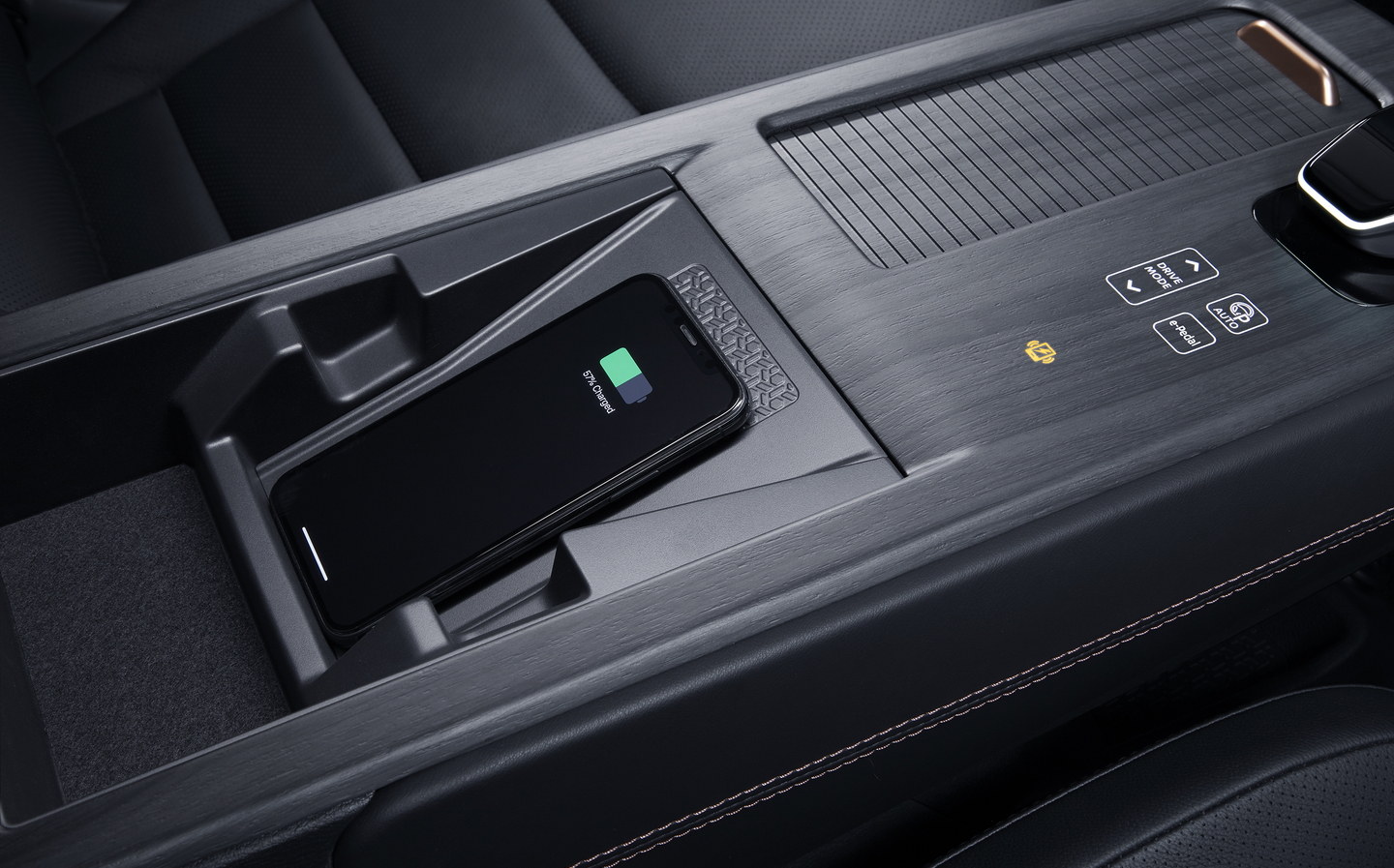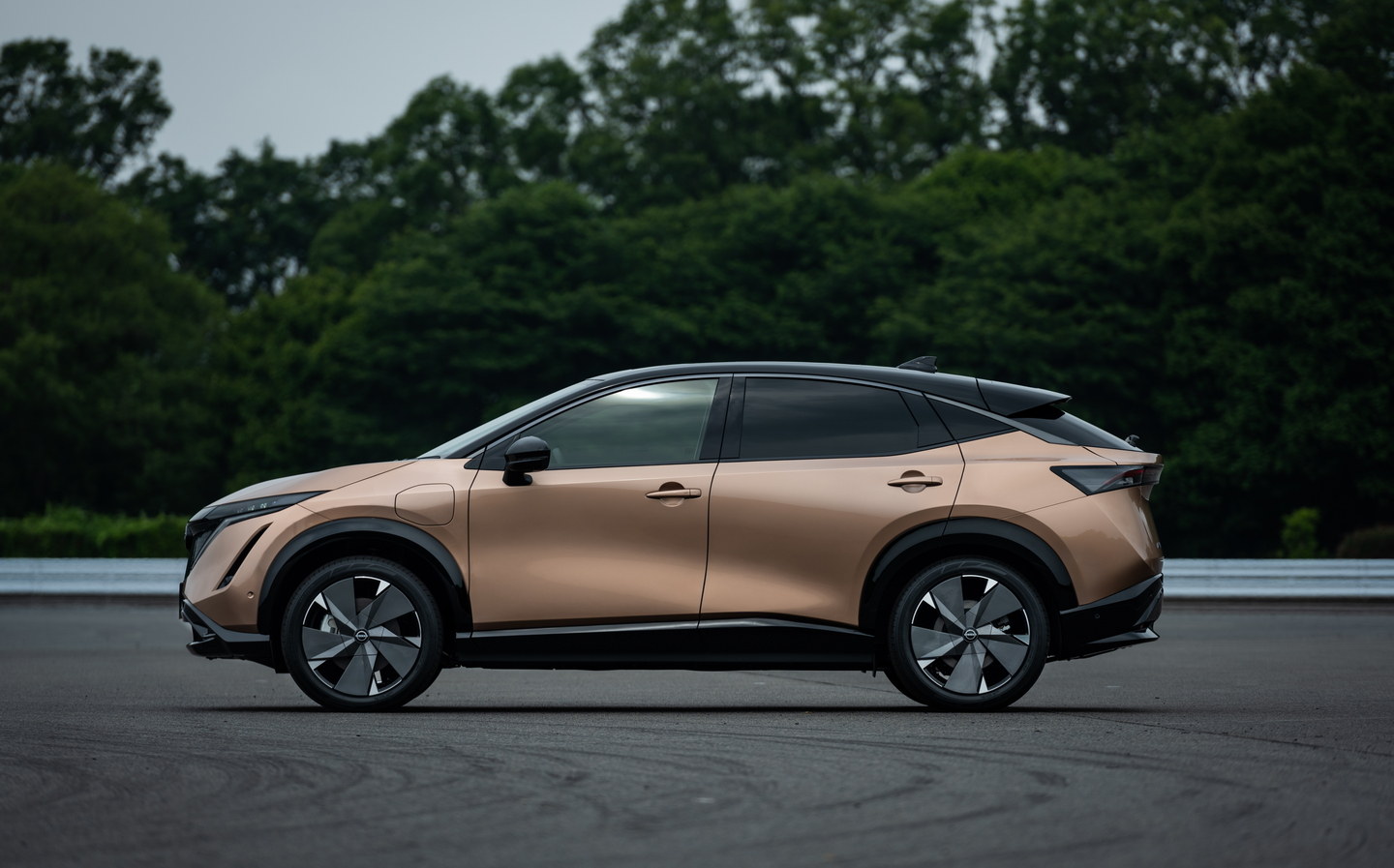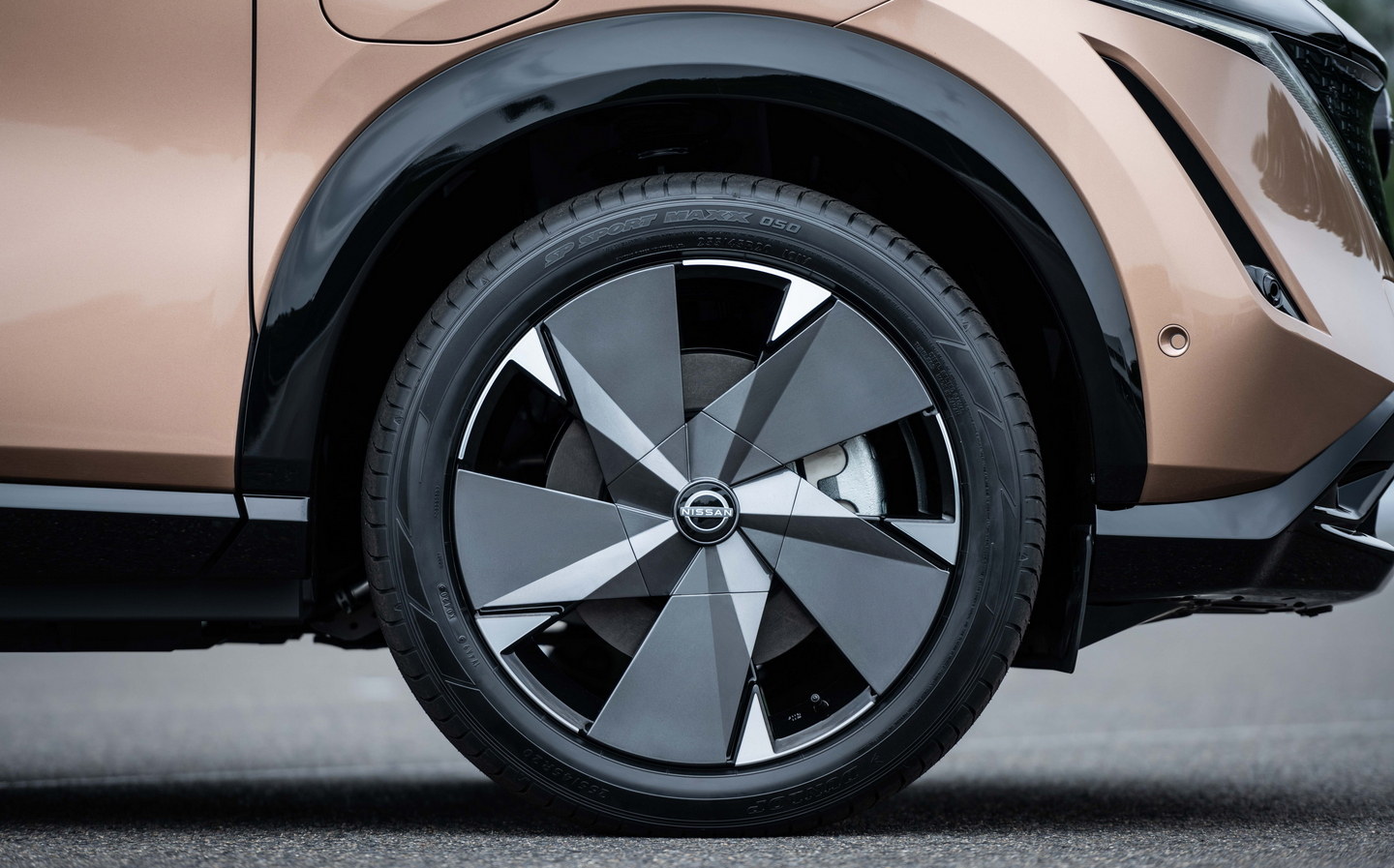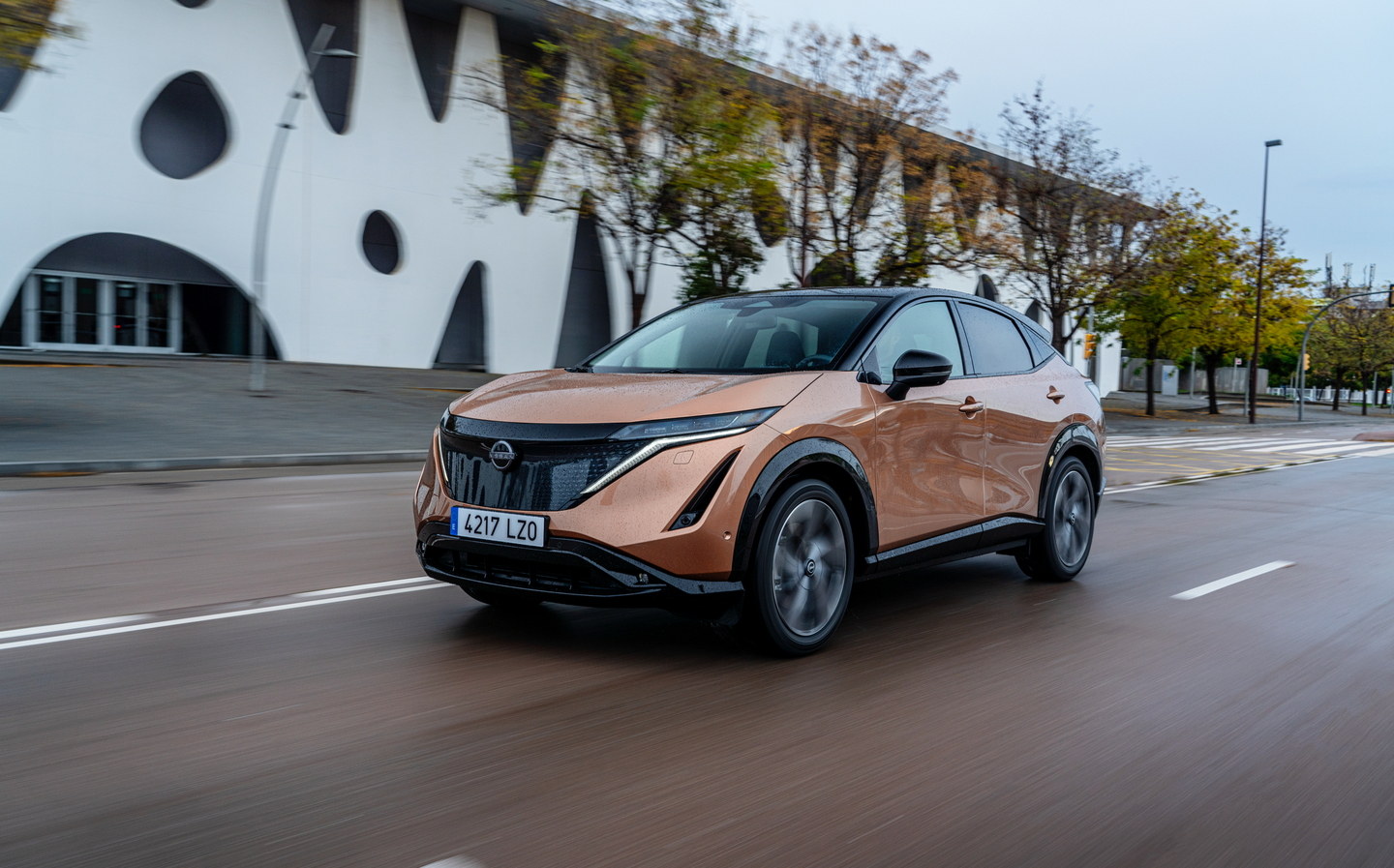Nissan Ariya review 2022: Brilliant new electric crossover makes a case for its high price
Ariya thinking of going electric?
The Nissan Ariya has been a long time coming. Nissan was quick out of the electric blocks way back in 2010 with its ground-breaking Leaf, bringing a relatively affordable hatchback EV to market, but despite selling nigh-on 600,000 examples to date, the Japanese company has been slow to seriously expand its electric line-up. Until now
In fairness, Nissan would have been a little quicker if it were not for the double whammy of the coronavirus pandemic and the semiconductor shortage, as the Ariya was revealed in production-ready format in the summer of 2020.
It will launch in the UK this summer and, ahead of that, we got the opportunity to test a pre-production Nissan Ariya on closed roads.
Despite the long gestation and a starting price that seems to place it above its most obvious rivals, this looks to be one electric crossover that has been worth waiting for.

Exterior design and rivals
The signature ‘Akatsuki Copper’ paint colour of the Ariya works well on the curvy SUV, accentuating its sharp detailing and contrasting with the black roof and door mirrors. The darkened lights front and rear and black wheels work especially well with this look, giving the Ariya a lot of presence.
There are five other two-tone finishes to consider, as well as four single-colour options, and no matter which you go for, this car manages to stand out, even in a sector full of interesting looking vehicles.

Nissan calls the Ariya a coupé-crossover, justified somewhat by its swooping rear window, but in effect it’s just a stylish-looking five-door SUV, much like its key rivals. Those already include heavyweights such as the Skoda Enyaq iV, Volkswagen ID.4, Kia EV6 and Hyundai Ioniq 5, while the Toyota bZ4X will shortly join the race for buyer affection. In certain specifications, the Ariya pricing will bring the Tesla Model Y into contention, too.
In terms of exterior dimensions, the Ariya is remarkably close to the VW and Skoda twins, which means it’s a larger car than the Qashqai, for example. Nissan will fit 19in alloy wheels as standard on most versions of the Ariya, with 20in rims on the top model or as part of a Sport Pack. These wheels feature aerodynamic covers to reduce drag through the air.
Interior and practicality
There’s no doubt that the Ariya’s cabin is the best to come from Nissan yet. A high-quality dashboard material spans the width of the car and is carried into the prominent, movable centre console.
In the middle of the fascia, it incorporates new touch-sensitive controls for the air conditioning that give haptic feedback as you press them – these look fantastic and really work well, too. It’s a better solution than having those controls accessible via the main touchscreen.

On the subject of which, Nissan has devised its own take on the double-screen setup that is all the rage right now. Two 12.3in displays sit side-by-side, with the central touchscreen easier to reach. The digital display in front of the driver is sensibly laid out and easy to read, too.
The centre console is particularly well thought-out, featuring a hidden wireless charging pad, another smartphone slot down low near a bank of various charging ports, the oddly-shaped drive selector (which also feels a little flimsy) and further controls with haptic feedback – for the driving modes and to open and close a hidden storage compartment under the dashboard.
In terms of space, the Ariya is comparable to rival electric SUVs, with loads of room in all directions for the front-seat occupants, exaggerated perhaps by the flat floor between their footwells. There’s another flat floor across the rear to accommodate three adults if needs be.
The middle rear-seat base is relatively wide, though parents of small children will note that there are Isofix mountings on the outer two seats only (as is the norm in the sector, to be fair).
The sloping roof may make the rear a little cramped feeling for those over six-foot in height, but otherwise it’s spacious and comfortable – and it’s easy to get in and out thanks to large door openings.

The rear seat backs split and fold forward to increase luggage capacity when needed. Nissan quotes a boot volume of 466 litres for front-wheel-drive models, reducing to 408 litres if all-wheel drive is fitted. In the former, a movable boot floor can hide charging cables underneath and create a completely flat surface to make carrying of long objects easier.
Technology and safety
The Ariya wears a redesigned Nissan logo that is illuminated by LEDs up front as you approach the car with the key fob. The lower section of the smooth ‘grille’ (Nissan calls it a shield) also lights up. Meanwhile, the super-thin LED headlamps are made up of four 20mm mini-projectors, and they’re complemented by sequential indicators.
Hidden behind the black panel at the front is an array of sensors for the ‘ProPilot’ driver assistance technology. Interestingly, Nissan refers to this as a ‘hands-on assistance system’, distancing itself from others (we’re looking at you Tesla) that suggest otherwise.
The Ariya uses navigation data as well as sensors to for advanced cruise control that can slow the car before a sharp corner, to the benefit of passenger comfort.

On top of all that, the Nissan Safety Shield includes 360-degree cameras, forward collision warning with emergency braking and automatic emergency braking when a object is detected during reversing, too.
Nissan will offer the Ariya in a remarkably wide range of guises, centred on the choice of two different battery packs. All cars come with an on-board 7.4kW AC charger and the capability to charge at up to 130kW on a DC fast-charger, which means a 10-80% recharge in 35 min for the 63kWh battery or 40 min for the 87kWh pack. A 22kW AC charger is optional on the entry-level model and standard across the rest of the range.
Performance, power output and acceleration
This depends on which battery you go for. The 63kWh unit (that’s the usable capacity) allows up to 223 miles of range in front-wheel-drive configuration and powers a 160kW electric motor (214bhp). It’s the version we tested and thanks in part to a kerb weight of under two tonnes it manages the 0-62mph sprint in a pretty handy 7.5 seconds.
It’s smooth as silk, whether you’re testing that claim (in which case you may experience some front-wheel scrabble depending on the surface as the tyres struggle for grip) or cruising along. The electric powertrain is one of the quietest on the market and the rest of the car seems to live up to that, too.

The 87kWh battery ups the range to 310 miles in front-drive guise, while also allowing a higher power output from the motor – up to 238bhp. It’s actually a tenth of a second slower to 62mph from rest, however, indicating that the extra weight of the bigger battery blunts performance somewhat.
To remedy that, buyers can upgrade to all-wheel drive – or ‘e-4orce’ in Nissan-speak – which adds a motor to the rear wheels and increases peak power to 310bhp, doubling maximum torque (twisting force, or punch) to 442lb ft. The 0-62mph time for this configuration is just 5.7 seconds, at the cost of outright range, which drops to 285 miles.
If that’s still not enough, Nissan will sell you the 87kWh Performance option, featuring a 389bhp combination of motors and 0-62mph in 5.1 seconds. The all-wheel-drive 87kWh models can usefully tow double the weight of the front-drive versions, at 1,500kg.
Ride and handling
We’ll have to save the judgement of the Ariya’s ride comfort for another day, as the test track was perfectly smooth. However, it did allow for more ‘spirited’ driving than would be possible on the public road. This revealed that the Ariya is set up to be smooth and refined in its driving manners, rather than outright engaging, as you’d expect in this sector.
There’s admirable body control through high-speed corners and great stability under heavy braking into tighter bends, too. The traction control system is well-judged, and the car feels planted and secure no matter how ham-fisted you are with inputs.
The suspension resists body roll particularly well and the steering, though devoid of meaningful feedback, is well-weighted. Sport mode adds more weight, to no benefit, though it does sharpen up response to the accelerator.

Press the e-Pedal button on the centre console and it’s possible to drive in stop-start traffic without touching the brake pedal and if you slot the drive selector into the B mode it enhances the brake energy regeneration effect. Even with that selected, the Ariya’s brake pedal feels remarkably natural.
Overall, it’s a pleasant car to drive, if not a thrilling one. It majors on refinement and stability, which is all most buyers will ask for.
Pricing and on-sale date
This is the only potential fly in the ointment for the Ariya. Pricing starts at £41,845 on the road, which is for the Advance 63kWh model. It rides on 19in rims, gets synthetic leather upholstery and does without some of the niceties of the more expensive cars in the line-up.
Although not always comparing like-for-like, there are versions of most of the Ariya’s rivals available for several thousand pounds less.
Perhaps pre-empting that comment, Nissan UK has pointed out that CAP HPI reckon that some of the Ariya models (including that entry-level variant) will retain 57% value over three years/30,000 miles. It’s expecting the best-seller to be the Evolve 87kWh, at £51,090. Adding all-wheel drive to that model costs an extra £2,600, while the range-topping Performance version is priced at £58,440.
Buyers can place an order for the Ariya now, with first deliveries expected this summer.

Verdict: Nissan Ariya review
On the face of it, the Ariya looks a little costly when compared with other similar mass-market electric SUVs, and that may limit its appeal.
However, its civility, quality and driving performance mean it compares favourably with any rival, while looking modern inside and out without resorting to gimmickry. There’s a wide range of versions available, too, whether you want long-distance ability or thrilling performance. There’s the making of an exceptionally good electric car here.
Related articles
- After reading this review of the 2022 Nissan Ariya, you might want to see our review of the Volkswagen ID. Buzz
- Here are all the car makers’ electric car plans
- Read our review of the Renault Mégane E-Tech Electric
Latest articles
- F1 2025 calendar and race reports: The new Formula One season as it happens

- Seven great automotive events to visit this summer, from F1 to art and champagne

- Watch new Porsche 911 GT3 smash Nürburgring record for manual cars

- Skoda Elroq 2025 review: Czech carmaker can’t seem to miss with its electric family cars

- Five best electric cars to buy in 2025



























